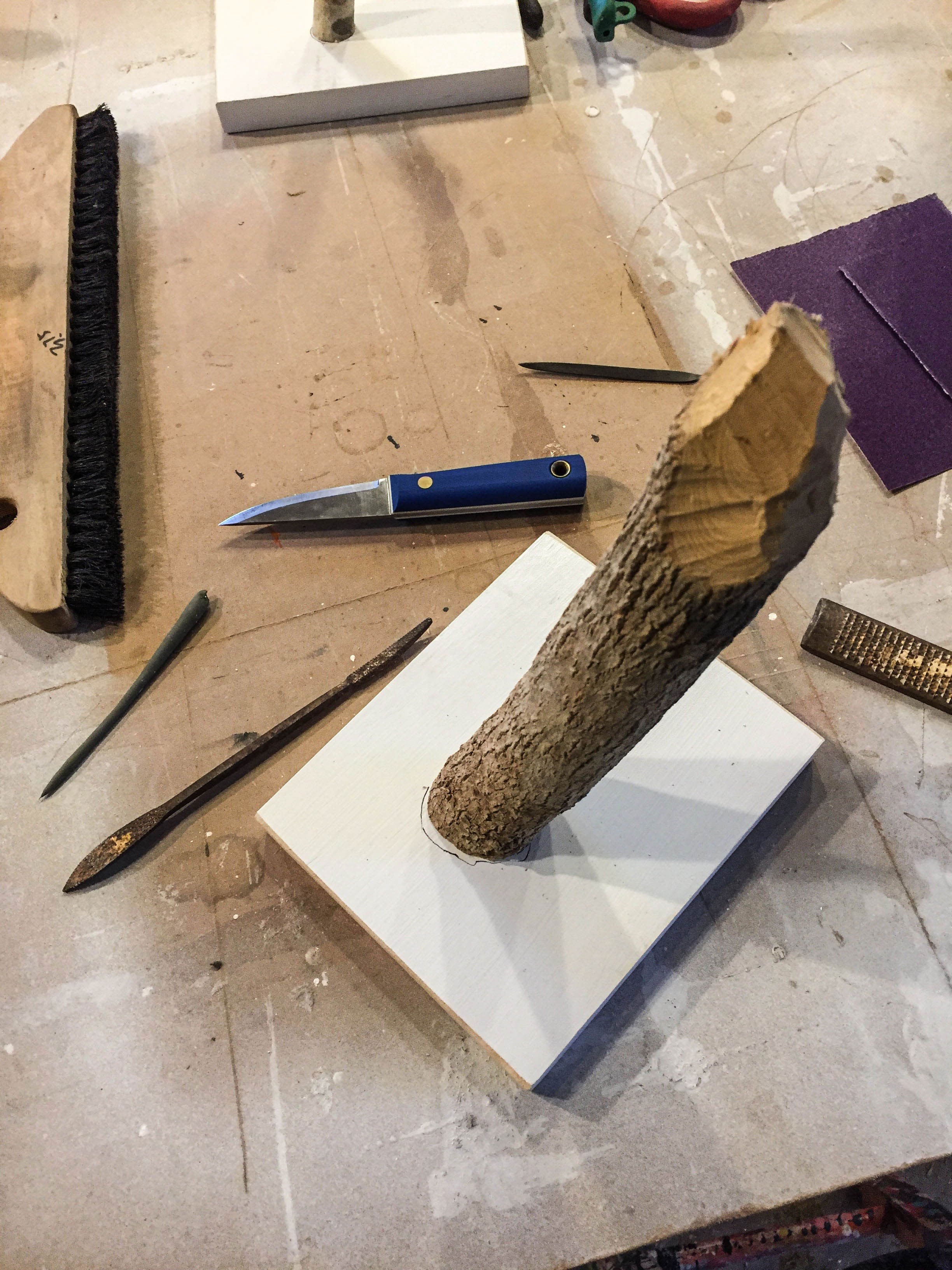CASTOR CRYSTALLUM
The Beaver Crystal
The Castor Crystallum is a symbiotic, collaborative work between the Artist and the Animal. Nature's most ingenious architect, the North American Beaver, has been enlisted to help create Sculpture. The resulting artifacts transcend their creators' efforts and are constructed to last millennia. These works symbolize resilience, perseverance, and adaptation, reminding us of the delicate and complex interplays between humans and the natural world.
T H E B E A V E R
Hidden within our country's untamed wilderness, where towering forests stretch far and freshwater flows, is the kingdom of Castor Canadensis, or, more humbly, the North American Beaver. Beavers are one of America's keystone native species. They have played an important ecological role for hundreds of thousands of years, instinctually engineering terrain to create bio-diverse habitats. Using their powerful jaws to fell trees, beavers build log, branch, and mud structures that block streams and turn fields into wetlands.
The North American Beaver has not only left an indelible mark on America's natural landscape but has also played a significant, albeit unintentional, role in the commodity markets of the New World. This influence spurred Western expansion and directly shaped the development of our modern nation.
T I P Y O U R H A T
In some ways, fashion started it all. In the 17th century, beaver felt hats were all the rage in Europe, but overharvesting of these animals rendered the continent's native population virtually extinct. Fortunately for European sartorialists, the "New World," including the Dutch-colonized island of Manhattan, would provide an alternate supply of pelts. And so, the fur trade was born.
French, Dutch, and English fur trappers, backed by organizations like the Hudson Bay Company, ventured into the wilderness, often led by indigenous peoples who knew the land intimately. These trappers braved harsh conditions while traversing vast, uncharted territories. Beaver pelts became the currency of ambition.
What started as game trails turned into footpaths, leading to wagon roads and rail lines. The Native Americans' premonitions of "spiderwebs" covering the land have come true as our highway networks continue to expand. Interestingly, some of the roadways we see on our maps today were initially carved out of the landscape to facilitate the beaver trade. Even today, the beaver's spirit remains deeply woven into the fabric of our modern world, and their instincts are ingrained within us all.






